 Home
Home- College of Education Departments and School
- School of Physical Education, Wellness, and Sport


School of Physical Education, Wellness, and Sport
The First Faculty
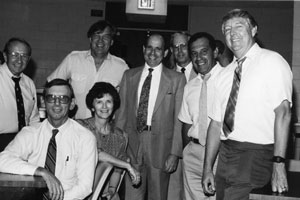
K-12 physical education teacher preparation programs have been a component of the College of Education from the very beginning of its inception. Students at USF were offered program of study that focused on the teaching of team sports, gymnastics, aquatics, and dance for primary and secondary school children. In 1963, Ms. Patricia Johnson became the College’s first physical education graduate.
The department began its expansion in 1963 with the appointment of Dr. Margaret Crickenberger who joined the College as a member of the Department of Curriculum and Instruction. Mr. Jack Stovall was appointed to the Department of Physical Education in 1966. Dr. Hubert Hoffman joined the department in the following year. At that time, Dr. Crickenberger was able to convince Dean Battle and USF President Allen that a new professional K-12 physical education program that utilized an innovative approach could be initiated by the beginning of the fall semester of 1967. The existing program that was at the time taught jointly by the faculty members of the College of Education and the Required Physical Education Program was phased out with the last graduating class in the spring of 1968.
The New Physical Education

Early on in her tenure at the College of Education, Dr. Crickenberger recognized that the practice of preparing students to become teachers for three and a half years before they experienced students in schools was not a logical teaching method. The newly restructured Physical Education Department was able to develop and implement a new approach to teaching physical education upon the appointments of Dr. Charles Smith and Dr. Louis Bowers in 1968. The five faculty members, (Dr. Smith, Dr. Bowers, Dr. Crickenberger, Dr. Hoffman, and Mr. Stovall) planned a teacher preparation program that was very innovative for its time. Students entered the program in their junior year and all enrolled in the same planned sequence of courses for five semesters leading to graduation.
In the first semester and throughout the program, students attended classes on campus three days per week and worked as an assistant to physical education teachers in Hillsborough County schools two days a week. Each semester the student interns that were taught by Dr. Crickenberger and Dr. Hoffman assumed an increasing level of responsibility in teaching students at the elementary, junior high, and high schools where they were assigned. Other unique features of the program included the integration of courses work in the areas of kinesiology, exercise physiology, and adapted physical education into a six hour credit course titled, Human Kinetics. Students also had contact with the same faculty member for curriculum and instruction courses and during their four internships.
The K-12 physical education curricula, which the physical education majors were prepared to teach, was different than the single-standard of skill and physical fitness levels required of all students at the time. The new program stressed the maximum level of participation for students in all activities at an appropriate level of challenge. Each student was provided the opportunity for progressive development with success at each new level of challenge. At the elementary level, this was accomplished largely through a movement-education problem-solving approach taught by Dr. Patricia Tanner and Dr. Jane Young. These physical education faculty members trained in movement education in their native country of England. Dr. Charles Smith, Dr. Herman Weinberg, and Mr. Jack Stovall taught the junior and senior high school programs which emphasized aerobic fitness, strength development, and life-long sports activities.
The College was also one of the first in the United States to prepare teachers in adapted physical education for students with disabilities. This area of the program was coordinated by Dr. Louis Bowers, Dr. Steve Klesius, and later Mr. Bill Price. Dr. Nell Faucette joined the faculty of the physical education teacher preparation program in 1991 and brought strong teaching and research skills to the K-8 Physical Education program. With the retirement of many of the original faculty members, Dr. Faucette has provided an important continuity in communicating the program philosophy to new faculty who joined the College.
Selective Admissions
The Physical Education program was designed to accommodate 60 new students who entered the program as juniors each fall. In 1974, the number of applications exceeded 100. At that time, the Professional Physical Education faculty decided to establish a selective admission and retention program. During the spring of each year, students who applied to the program were invited on campus for orientation, testing, and an interview with two faculty members. The 70 top-rated students were invited to enroll in the program. Once in the program, students who were not demonstrating an acceptable level of academic performance or professional behavior were called in to meet with a faculty committee for counseling and the formulation of a contract for improvement. In rare instances, students who could not make the necessary improvements were eventually dismissed from the program.
Programs and Activities
Student Professional Activities
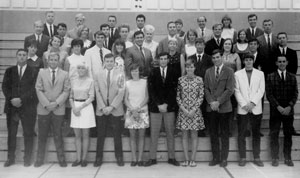
Student participation in professional activities among physical education majors was strong. In 1968, the Professional Physical Education Department hosted a National Conference on Perceptual Motor Development. The event was sponsored by the American Association for Health, Physical Education, Recreation, and Dance. Over 500 educators were in attendance. Faculty and undergraduate students in the program were actively involved in every phrase of the conference.
The Physical Education Majors Club, advised by Dr. Charles Smith, was a key component in facilitating student involvement in professional activities both on and off of the USF campus. Physical education majors consistently had the highest percentage of attendance at state physical education conferences than any other college in Florida.
In 1973, the Physical Education Majors Club celebrated and promoted “Physical Education Week” by conducting the “24-Hour Run for Fun” which attracted 30 teams of 10 runners. One team included USF President Cecil Mackey, who ran 24 miles. The club also sponsored a university-wide lecture featuring Dr. Ken Cooper, the inventor and promoter of aerobic training, and Millie Cooper, also an advocate in the area of fitness for women. The organization also conducted a seminar entitled “Risk Factor Screening for Cardiovascular Disease” at the University Center for students, faculty, and staff during “Physical Education Week.” Beginning in 1986, the Physical Education and Wellness Leadership Programs selected student to receive a “Major of the Year” award. The winner received an all-expenses-paid trip from the department’s professional development fund to the American Alliance of Health, Physical Education, Recreation and Dance Convention to receive this recognition. (See NASPE Student of the Year Recipients.) Dr. James Rauschenbach later assumed the responsibility of faculty advisor for the club and continued to involve students in presentations on physical education at state and national conferences.
In 1983, Karen Jacobs and George Murray, two outstanding wheelchair athletes, completed their physical education undergraduate degrees at USF. Ms. Jacobs continued her studies in the College and completed her master’s degree in adapted physical education. She went on to become the first director for the Rehabilitative Sports Center at Tampa General Hospital. Mr. Murray became an international wheelchair marathon champion and the first person to travel across the United States in a wheelchair. He received the USF Alumni Association’s Outstanding Senior Award in 1983.
Federal Grants and the Development of Master’s Degree Programs
In 1968, the master’s degree program in physical education with a specialization in adapted physical education was developed with assistance of a federal grant secured by Dr. Louis Bowers from the Bureau of Education for the Handicapped and housed in the Department Professional Physical Education. In 1969, Dr. Stephen Klesius joined the faculty on the Adapted Physical Education Grant. This funding allowed the College to involve its students in a new specialization area as it became was one of the first institutions in the United States to offer a specialization in adapted physical education.
These programs continued to be funded for graduate assistantships and undergraduate scholarships for 30 years and graduated over 250 certified teachers to work in the field of adapted physical education. Dr. Bowers and Dr. Klesius secured approximately $4.5 million in external funding for research, program development, and student support over a thirty year period. These external funds were the result of 55 different grants from the federal and state governments, foundations, and the North Tampa Civitan Club. The grants supported program development, undergraduate student scholarships, graduate student assistantships, research on safe and accessible playgrounds for children with disabilities, and the development of interactive video learning systems for the preparation of teachers.
The faculty and the department chair were readily available to meet with students to discuss courses, internships or other matters. For the first ten years, a graduation ceremony was held for the graduates of the Professional Physical Education Program the evening before the university-wide graduation ceremony. Each year, state physical education conferences served as the gathering of USF Physical Education alumni and current students. When USF began its Homecoming Celebration in conjunction with a basketball game, the Professional Physical Education Department hosted the Annual Alumni Reception (see photographs).
Health Education Program
A health education program was developed in 1974 with the hiring of Dr. Rita Bruce. After five years, the program was moved to the Secondary Education Department within the College of Education. Dr. Bruce collaborated with Science Education faculty members the program to continue to prepare many health educators for the workforce. When the USF College of Public Health was established, Dr. Bruce was invited to move the program to the new school where it became a master’s degree program and flourished with the addition of new health education faculty members. Dr. Rita Bruce later went on to become an associate dean in the College of Public Health.
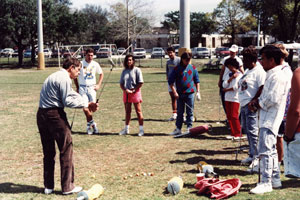
Elective Physical Education Program
In 1988, the Elective Physical Education Program, which was housed under the Office of Student Affairs, merged with the Professional Physical Education Department in the College of Education. In 1971, the physical education requirement for graduation was removed. The Elective Physical Education Program expanded its course offerings and maintained its quality of teaching. The program flourished and its high enrollment and low cost was supportive of the Professional Physical Education and Wellness Leadership Programs.
K-8 and 6-12 Certification
Mainly through the efforts of Dr. Hubert Hoffman in 1980, K-12 certification in Florida was separated into two categories for physical education teachers, K-8 and 6-12. This provided an opportunity for in-depth specialization in both subject matter and internships for students after their first semester in the program. Unfortunately, in 2002 the Florida Department of Education returned the certification for physical education teachers to K-12 which reduced the level of specialization.
USF Tampa Bay Cardiac Program
In 1970, Dr. Bob Beasley joined the faculty of the Professional Physical Education Department to teach exercise physiology and a course on the care and prevention of injuries. In 1985, Dr. Beasley initiated the on-campus USF Tampa Bay Cardiac Program which was designed to prevent heart disease through exercise. The program soon added a cardiac rehab exercise component for individuals recovering from heart attacks. The program continued for five years and served as the clinical experience for students in a newly developed master’s degree program in the study of exercise science. The program was moved from the USF campus to a downtown Tampa location for the convenience of students working in that area. Unfortunately, because the program did not receive funding and had to compete with similar programs that were available to the public in other area hospitals, the program was discontinued. Dr. Beasley later focused his creative talent on the inventing of aquatic exercise equipment and first aid teaching devices.
Wellness Leadership Program
In 1995, the Wellness Leadership Undergraduate Program was developed by the faculty of the Professional Physical Education Program to meet the expressed needs of the community and student interest. Awareness of the value of wellness for employees meant improved productivity and reduced health costs. Dr. Diane Hall joined the faculty in 1975. She was largely responsible for the development and early success of the program which provided wellness specialists for wellness and fitness centers in corporations, hospitals, and community agencies. The program, which has now been named the Exercise Science Program, has graduated over 300 wellness leaders.
School of Physical Education Wellness and Sport Studies
In 1993, due to the unique mission and programs provided at the Professional Physical Education Department, the department was recognized as a school within the College and re-named the School of Physical Education, Wellness, and Sport Studies.
Athletic Training Program
In 1999, the Undergraduate Athletic Training Program was developed and approved by the university due largely to the efforts of Dr. David Klossner. Shortly thereafter, he resigned from the USF and accepted a position to serve as Vice President for Research with the National Collegiate Athletic Association. Dr. Miki Cuppert was hired to launch the program. Due to her superb work and student performance, the program received national accreditation within two years. Dr. PreDeep Vanguri became the second full-time faculty member in 2004 and the program coordinator in 2006.
Faculty Chairpersons 1967-2006
- 1966-1968, Dr. Jack Stovall
- 1968-1972, Dr. Louis Bowers
- 1972-1975, Dr. Hugh Hoffman
- 1975-1978, Dr. Steve Klesuis
- 1978-1980, Dr. Herman Weinberg
- 1980-1985, Dr. Louis Bowers
- 1985-1991, Dr. Hugh Hoffman
- 1991-2000, Dr. Louis Bowers
- 2000-2004, Dr. Michael Stewart
- 2004-2005, Dr. Herman Weinberg (interim)
- 2005-Present, Dr. Steve Sanders
School of Physical Education, Wellness and Sports Retired Faculty
The retired faculty members from the School of Physical Education, Wellness and Sport Studies shown below represent an era of physical education at the University of South Florida from 1960 to 2005. Each provided 30 years or more of outstanding service to the College of Education and the schools of Florida.
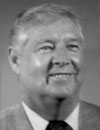 Louis Bowers
|
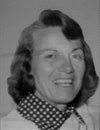 Margaret Crickenberger
|
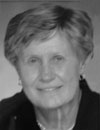 Diane Hall
|
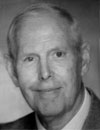
Robert Grindey
|
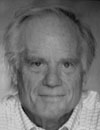
Richard Heeschen
|

Gill Hertz
|

Hubert Hoffman
|
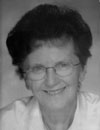
Jane Young
|
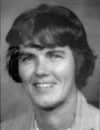
JoAnn Young
|
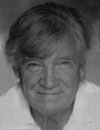
Tony Jonaitis
|

Stephen Klesius
|
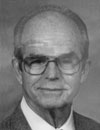
Sam Prather
|
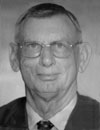
William Price
|
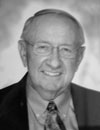
Charles Smith
|
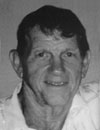
Spafford Taylor
|
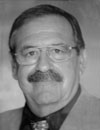
Herman Weinberg
|
USF National Association of Sport and Physical Education Student of the Year
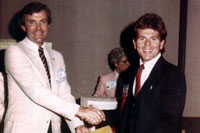
- 1986, Richard Delong
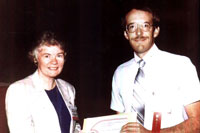
- 1989, Bob Watson
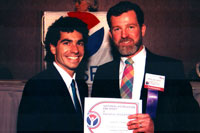
- 1990, Juan Vasquez
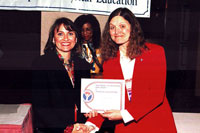
- 1991, Jan Fitz
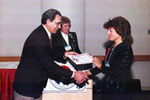
- 1992, Connie Bacon
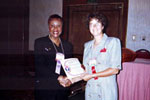
- 1995, Shannon Williams
- 1981- Brenda Hughes
- 1982- Alice Walke
- 1983- Ryan Johnson
- 1984- Mandalyn Smith
- 1985- Chris Bakos
- 1986- Christopher Schneider
- 1987- Heidi Weick
- 1986- Richard DeLong
- 1988- David Koehler
- 1989- Robert Watson
- 1990- Juan H.Vasquez
- 1991- Jan Fitz
- 1992- Connie Bacon
- 1993- Wanda DuBois
- 1994- John McDougall
- 1995- Shannon Williams
- 1996- David Outlaw
- 1997- Franz Sails
- 1998- Michelle Rivera
- 1999- Sabrina Weaver
- 2000- Jason Robichaud
- 2001- Karen Tickner
- 2002- Pablo Gallego-Alvarez
- 2003- Alexis Barror
- 2004- Meagan Sheehan
- 2004- Jennifer Johnson
- 2004- Dusty DeGreenia
- 2005- David Byington
























